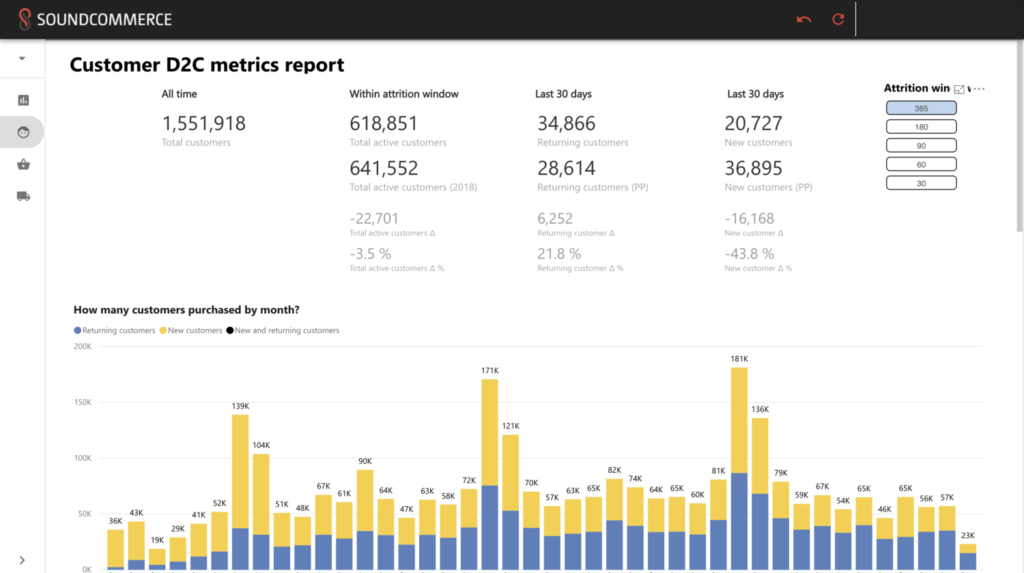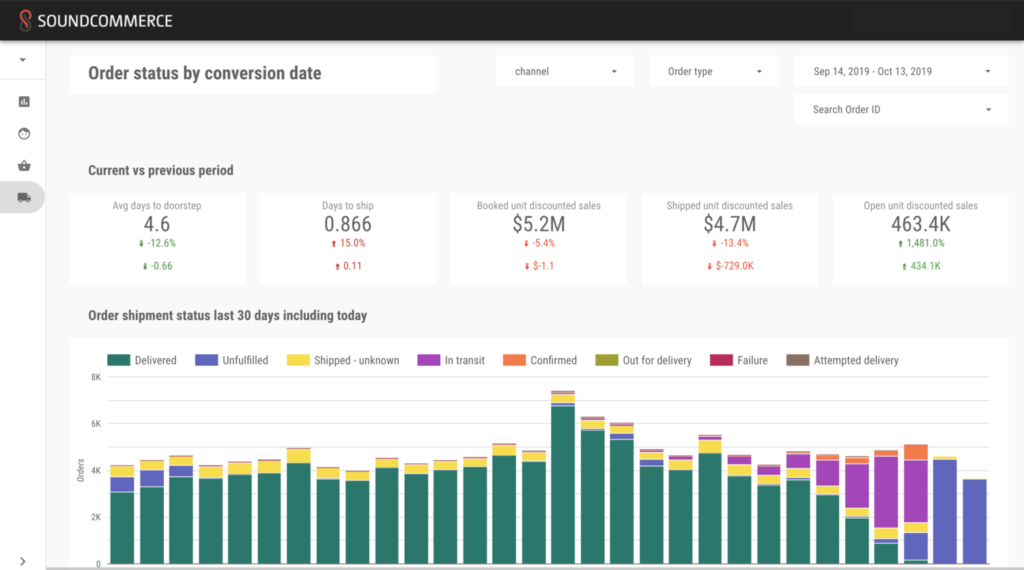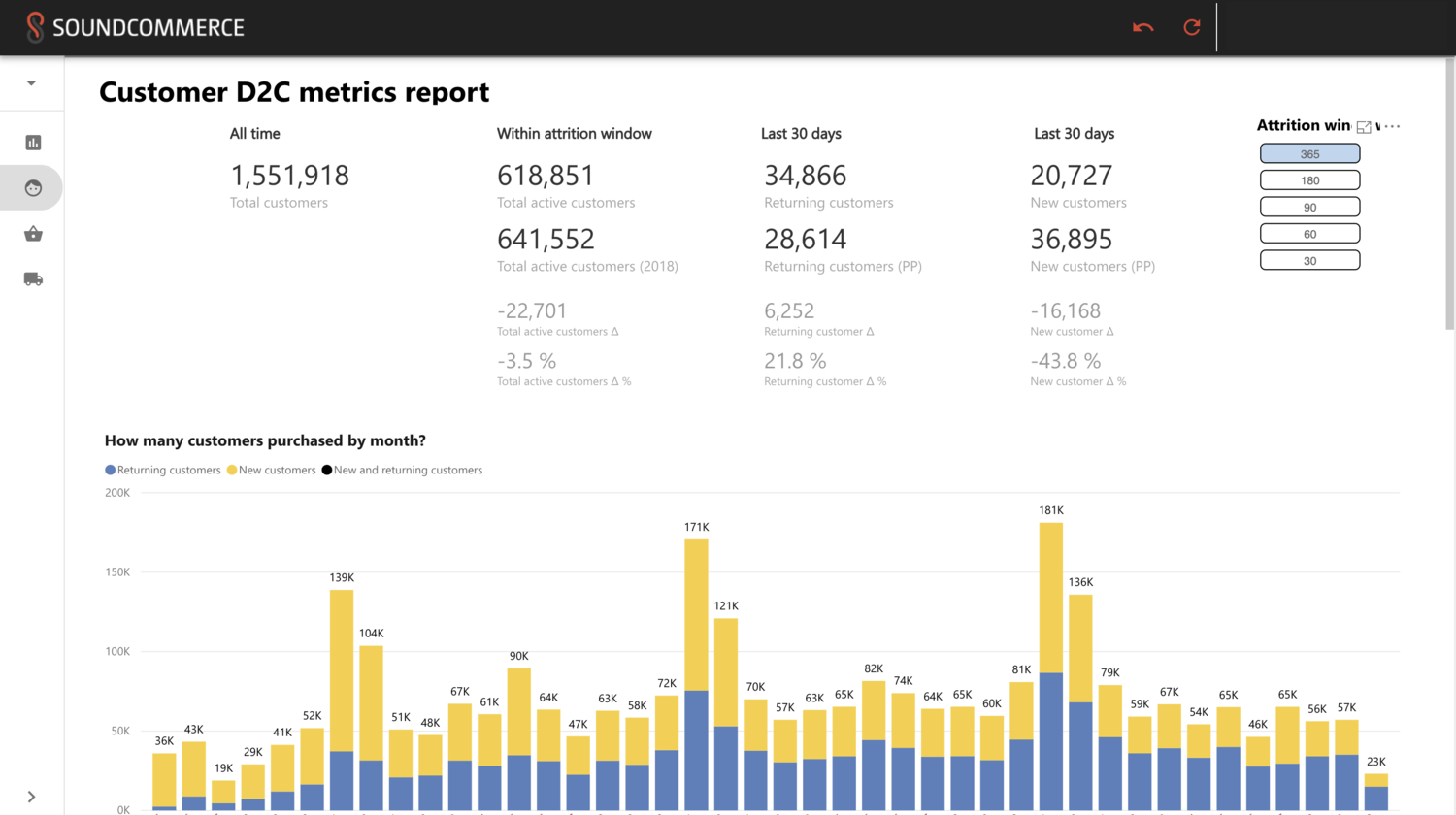
1. You value and serve every shopper the same
“Yeah, finance ran the numbers last spring. Our customer LTV is $247.86.
“Well, of course that’s an average.”
“No, I guess I really don’t know the unique value of this inbound caller. I’ll just offer her free returns and a discount on her next order and hope that drives repeat engagement. Funny, it looks like she’s returned everything she’s ever bought from us…”
The Retail Data Platform dimensions marketing, merchandising and operations data into a complete picture of both customer engagement and customer experience across marketing and operations. This makes it easy to align customer actions with individual customer LTV.
2. You measure contribution profit using blended averages
“We went live with free 2-day shipping on all first time orders and doubled our Facebook budget to hit our product launch goal. Those new tariffs increased our COGS by 30%; and the inventory is stuck in Jersey until we can get the Irvine DC online so we’re paying for expedited cross-country delivery on every order…”
“Which orders actually generate a profit? We need to manage profits at the order and customer level!”
“By the way, I heard our CFO just froze our spring/summer inventory buys because of supplier credit issues…”
Building upon granular costing data, the Retail Data Platform provides a profitability waterfall for each order, product, shipment, and customer in real time.

3. You find out about operational exceptions when customers complain on Facebook
“There’s a backlog of 1,000 customer service tickets since we stocked out during that huge sales promotion. Now all these shoppers are bashing us on Facebook…”
“I knew this was going to happen! Marketing spent $94,000 advertising inventory we had already committed to BigBoxRetailer. Why can’t we better coordinate our decision making across operations and marketing?!”
With margin, customer value, inventory and demand awareness, a Retail Data Platform predicts inventory needs, plus informs where inventory should be staged as a reflection of high-value customer demand.
4. Discounting is your primary lever to hit revenue goals
“We should have known better. As soon as we lit up that 40%-off new customer promotion, a bunch of our best subscription club members quit — and then signed up again!”
“What we need to do is align operations with customer rewards. We know customer engagement drops after month 7, so let’s include a free sample and upsell promotion in the shipping box when each customer cohort hits their 6 month anniversary.”
“We should also be triggering a winback phone call from a real person on our CS team when we see cancellation events. Those guys are awesome and make our customers feel great.”
The Retail Data Platform identifies core drivers and detractors of customer engagement and retention across merchandising, marketing, customer service, and operations — triggering actions to drive results at key moments in the customer journey and product lifecycle.
5. You wait for the monthly close to know if you made your numbers
“We’re waiting for final budget approval for our holiday marketing campaign, but nobody really knows how the last one performed because the ERP migration project delayed our financial reporting again…”
“The bigger problem is there’s no way to tie our spend to real world results at the order and customer level. I wish we could show our CEO the exact names and order IDs that were incremental as a result of that awesome WWF YouTube collab.”
The Retail Data Platform is aware of order and customer KPIs — layering in attributed marketing spend to determine the exact ROI of specific campaigns down to the individual order and customer ID.

6. You’re a “Super-Tabber”
“It’s easy! I have all the data at my fingertips on these 17 open browser tabs.”
“I’ll just cut and paste this order ID from Shopify into Netsuite. Then I can use the shipping ID from the matching WMS manifest to see if the package is out for delivery on UPS.com. I then append that status to my open Zendesk ticket to process the return on my Returnly tab… I can’t forget to log this in Hubspot or the confirmation emails won’t go out…”
A Retail Data Platform consumes data from disparate systems, linking entities like products, orders and customers to create actionable data in one central place.
7. You build the same reporting spreadsheets every week
“I built this whiz-bang spreadsheet for the Monday exec review. But you know, I could do a lot more strategic analysis if I didn’t spend all my time exporting data from GA, Shopify, NetSuite, and Zendesk into Excel.”
Retail Data Platforms aggregate disparate data into a unified data model for easy dimensioning and rendering into your favorite BI tool or spreadsheet — and orchestration of data and events to downstream systems that need to know.
8. You’re hiring a(nother) data analyst
“We spent all that money on consultants building dashboards last year — and nobody uses them! What we really need is a way to get to the data easily — so we can answer complex questions we didn’t know to ask last month, last year.”
“Better yet, push the data back into [NetSuite, Zendesk, GA, Shopify, etc] and trigger some automation, so we’re not relying on people to take action on the data.”
The Retail Data Platform provides direct access to the entire data graph for direct query, BI, and outbound data orchestration, allowing analysts to focus on insights rather than integrations.
9. Everything just broke because ____________ changed their API again.
“SaaS-erator is amazing! The whole marketing team is using it now.”
“But they changed their API, so none of the data is available in our reports or in any other system. Now we’re doing a daily file export and Bob is cutting and pasting the records. Last week the data came across with the wrong attributes and we inadvertently cancelled 400 orders. That’s $99,144 in affected customer LTV!”
By collecting and immutably storing raw event data upstream of specific use cases and data models, the Retail Data Platform is highly adaptable and responsive to changes in source data and data schema.
10. You’ll have all the answers as soon as IT finishes that new data warehouse in 2021
“I heard our new CIO likes AWS better than Azure so we’re migrating cloud providers. As part of the project we’re ripping out our data lake and building a new data warehouse on Snowflake. It’s going to take 8 engineers two years to build and cost $2M in license fees.”
“Related, they’re asking my team to document by Friday all of the questions we’ll want to answer — and the use cases we need to support — when the new system goes live in 24 months.”
With prebuilt collectors for your SaaS providers (Shopify, NetSuite, etc) and standard protocols (EDI, FTP, HTTP, etc), the Retail Data Platform enables enterprise-wide insights, decisioning and data orchestration within weeks of kickoff.
You might just need a Retail Data Platform.
Contact SoundCommerce today to take control of your customer experience, profitability and customer LTV!

